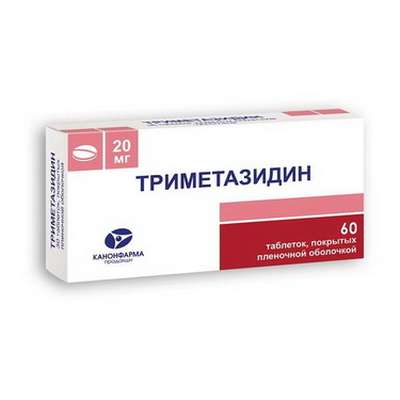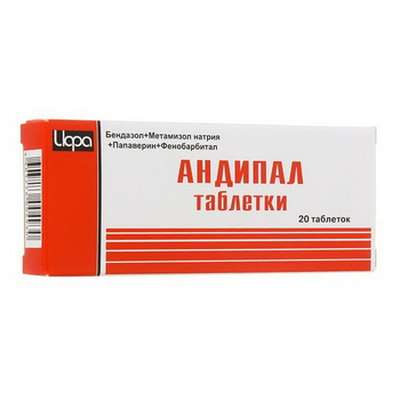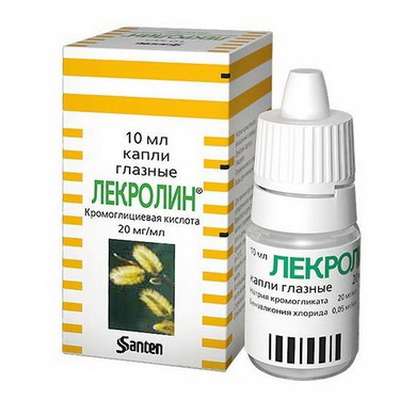Instruction for use: Nextrim Active
I want this, give me price
ATX code N02BA71 Acetylsalicylic acid in combination with psycholeptics
Pharmacological group
Other non-narcotic analgesics, including non-steroidal and other anti-inflammatory drugs
Nosological classification (ICD-10)
G43 Migraine
The pain of migraine, Migraine, hemiplegic migraine, Migraine headache, A migraine attack, Continuous headache, hemicranias
J06 Acute upper respiratory infections of multiple and unspecified
Frequent colds viral diseases, Infections of the upper respiratory tract, Acute respiratory disease influenza character, for colds Pain, Acute colds,Cold, respiratory infection,Seasonal colds, Pain in infectious and inflammatory diseases of the upper respiratory tract, Bacterial infections of the upper respiratory tract, Bacterial respiratory infections, Viral disease of the respiratory tract, Viral respiratory tract infections, Inflammatory disease of the upper respiratory tract, Inflammation of the upper respiratory tract disease, Inflammation of the upper respiratory tract illness with difficult sputum, Inflammatory airway disease, Secondary infections with colds, Shortness of sputum in acute and chronic respiratory diseases, Upper respiratory tract infection, Infections of the upper respiratory tract, Respiratory Tract Infections, Infections of the respiratory tract and lungs, Infectious-inflammatory diseases of the upper respiratory tract, Infectious-inflammatory diseases of the upper respiratory tract and ENT-organs, Infectious-inflammatory diseases of the upper respiratory tract in children and adults, Infectious-inflammatory diseases of the upper respiratory tract, Infectious inflammation of the airways,respiratory infection, Qatar upper respiratory tract, Catarrh of the upper respiratory tract, Catarrhal disease of the upper respiratory tract, Catarrhal symptoms of the upper respiratory tract, Coughing with a cold, SARS, ARI, ARI with rhinitis phenomena, Acute respiratory infection, Acute infectious and inflammatory disease of the upper respiratory tract, Acute respiratory disease, Sore throat or nose, Respiratory viral infections, Respiratory diseases, Respiratory infections, Recurrent respiratory infections, Secondary infection with influenza, cold in the chest, Feverish condition with flu usitis, acute sinusitis, genyantritis, purulent sinusitis
K08.8.0 * Painful toothache
Dentinal pain, Dentinal pains, Pain pulpitis, Anesthesia in dentistry, Pain syndromes in dental practice, Pain after removal of tartar, Pain when extracting a tooth, Toothache, Pain after dental interventions
M25.5 Pain in the joint
Arthralgia, Pain syndrome in musculo-articular diseases, Pain syndrome in osteoarthritis, Pain syndrome in osteoarthritis, Pain syndrome in acute inflammatory diseases of the musculoskeletal system, Pain syndrome in chronic inflammatory diseases of the musculoskeletal system, Pain in the joints, Soreness of the joints, Soreness of joints in severe physical exertion, Painful inflammatory joint damage, Painful conditions of the musculoskeletal system, Painful joint conditions, Painful traumatic affection of joints, Pain in the musculoskeletal system, Pain in Shoulder Joints, Pain in the joints, Joint pain, Joint pain with injuries, Musculoskeletal pain, Pain with osteoarthritis, Pain in the pathology of the joints, Pain in rheumatoid arthritis, Pain in chronic degenerative bone diseases, Pain in chronic degenerative joint diseases, Bone-joint pain, Joint pain, Arthritic pain of rheumatic origin, Articular pain syndrome, Joint pain, Rheumatic pain, Rheumatic pains
M54.1 Radiculopathy
Acute sciatica, Radiculopathy, Radiculitis, Radiculitis with radicular syndrome, Acute radiculopathy, Pain syndrome with radiculitis, Subacute radiculitis, Radiculitis, Chronic radiculitis, Diseases of the spinal column
M54.4 Lumbago with sciatica
Pain in the lumbosacral spine, Lumbago, Sciatica, Lumbar syndrome
M79.1 Myalgia
Myofascial pain syndromes ,Pain syndrome in musculo-articular diseases, Pain syndrome in chronic inflammatory diseases of the musculoskeletal system, Pain in the muscles, Tenderness of muscles, Muscular soreness in severe physical exertion, Painful conditions of the musculoskeletal system, Pain in the musculoskeletal system, Pain in the muscles, Pain at rest, Muscle aches, Muscle pain, Musculoskeletal pain, Myalgia, Muscle pain, Muscle pain at rest, Muscle pain, Muscular pain of non-rheumatic origin, Muscle pain of rheumatic origin, Acute muscle pain, Rheumatic pain, Rheumatic pains, Myofascial syndrome, Fibromyalgia
N94.6 Dysmenorrhea Unspecified
Pain during menstruation, Functional disorders of the menstrual cycle, Menstrual cramps, Emmeniopathy, Pain during menstruation, Painful menstrual irregularities, algomenorrhea, algomenoreya, Pain smooth muscle spasm, Pain spasm of smooth muscles (renal and biliary colic, intestinal spasms, dysmenorrhea), Pain spasm of smooth muscles of internal organs (kidney and biliary colic, intestinal spasms, dysmenorrhea), Disalgomenoreya, dysmenorrhea, Dysmenorrhea (essential) (Exfoliative), menstrual disorder, menstruation painful, metrorrhagia, Violation of the menstrual cycle, Menstrual irregularities, Prolaktinzavisimoe menstrual disorders, Prolaktinzavisimoe menstrual dysfunction, Pain spasm of smooth muscles of internal organs, Spasmodic dysmenorrhea, Primary disalgomenoreya
R50 Fever of unknown origin
Malignant hyperthermia, Hyperthermia malignant
R51 Headache
Pain in the head, Cephalgia, Pain with sinusitis, Pain in the back of the head, Painful headache, Headache of vasomotor genesis, Headache of vasomotor origin, Headache with vasomotor disorders, Headache, Neurological headache, Serial headache
Composition and form of release
Tablets 1 table.
acetylsalicylic acid 300 mg
ethyl salicylamide 100 mg
caffeine 50 mg
auxiliary substances: potato starch; lactose
in contour non-jammed packaging 10 pieces; in a pack of cardboard 1 package.
Description of dosage form
Tablets are white, round, flat.
pharmachologic effect
Pharmacological action - antipyretic, analgesic, psychostimulating.
Acetylsalicylic acid has analgesic, antipyretic and anti-inflammatory action, inhibits platelet aggregation.
Ethylsalicylamide has an analgesic and antipyretic effect.
Caffeine reduces drowsiness and fatigue, increases mental and physical performance, increases heart rate, increases blood pressure in arterial hypotension.
Indications
The raised temperature of a body at cold and other infectious-inflammatory diseases (at adults and children is more senior 15 years).
Moderately or mildly expressed pain syndrome of various origin in adults (headache, toothache, migraine, neuralgia, arthralgia, muscle pain, menstruation pain, thoracic syndrome, lumbago, etc.).
Contraindications
Hypersensitivity to acetylsalicylic acid and other NSAIDs or other components of the drug.
Erosive-ulcerative lesions of the gastrointestinal tract (in the phase of exacerbation); chronic or recurrent ulcer disease.
Asthma caused by the intake of salicylates or other NSAIDs.
Blood clotting disorders, such as hemophilia, hypoprothrombinemia.
Polyposis of the nose associated with bronchial asthma and intolerance to acetylsalicylic acid.
Arterial hypertension.
Hemorrhagic diathesis.
Severe violations of the liver and / or kidney function.
Combined use of methotrexate in a dose of 15 mg per week or more.
Pregnancy (I and III trimesters), the period of breastfeeding.
The drug is not prescribed for children under 15 with acute respiratory infections caused by viral infections, because of the risk of developing Reye's syndrome (encephalopathy and acute fatty liver disease with acute development of liver failure).
With caution - with concomitant therapy with anticoagulants, gout, peptic ulcer and / or duodenal ulcer in history, kidney and / or liver failure, deficiency of glucose-6-phosphate dehydrogenase.
pregnancy and lactation
Contraindicated in pregnancy (in I and III trimesters). For the duration of treatment, breastfeeding should be discontinued.
Side effects
On the part of the nervous system: agitation, anxiety, tremor, anxiety, headache, dizziness, epileptic seizures, increased reflexes, tachypnea, insomnia.
From the cardiovascular system: palpitation, tachycardia, arrhythmia, increased blood pressure.
From the digestive system: nausea, vomiting, exacerbation of peptic ulcer, pain in the epigastric region.
Allergic reactions: skin rash, bronchospasm, angioedema.
Other: nasal congestion, thrombocytopenia, tinnitus, increased sweating. Formation on the basis of the hapten mechanism of the "aspirin" triad (combination of bronchial asthma, recurrent nasal polyposis and paranasal sinuses and intolerance to acetylsalicylic acid and preparations of pyrazolone series).
When such symptoms appear, it is recommended to stop taking the drug and immediately consult a doctor.
Interaction
Acetylsalicylic acid increases the toxicity of methotrexate, the effects of narcotic analgesics, other NSAIDs, oral hypoglycemic drugs, heparin, indirect anticoagulants, thrombolytic agents and platelet aggregation inhibitors, sulfonamides (including co-trimoxazole), and lyotyronine; reduces the toxicity of uricosuric drugs (benzbromarone, sulphinpyrazone), antihypertensive drugs and diuretics (spironolactone, furosemide).
Glucocorticosteroids, alcohol and alcohol-containing preparations increase the damaging effect on the gastrointestinal mucosa, increase the risk of developing gastrointestinal bleeding.
Acetylsalicylic acid increases the concentration of digoxin, barbiturates and lithium preparations in blood plasma.
Antatsida, containing magnesium and / or aluminum hydroxide, slow down and worsen the absorption of acetylsalicylic acid.
Caffeine accelerates the absorption of ergotamine.
With the joint use of caffeine and barbiturates, primidone, anticonvulsant drugs (hydantoin derivatives, especially phenytoin), it is possible to increase metabolism and increase caffeine clearance.
When combined with cimetidine, oral contraceptives, disulfiram, ciprofloxacin, norfloxacin, a decrease in the metabolism of caffeine in the liver is possible (slowing its elimination and increasing the concentration in the blood plasma).
When Nextrim® Active is used together with caffeine-containing beverages and other CNS-stimulating drugs, excessive stimulation is possible.
Mexiletine reduces caffeine withdrawal to 50%; nicotine increases the rate of caffeine withdrawal. Caffeine reduces the absorption of calcium in the digestive tract; reduces the effect of narcotic and hypnotic drugs.
Caffeine increases excretion of lithium drugs with urine; accelerates absorption and enhances the action of cardiac glycosides, increases their toxicity.
Joint use of caffeine with beta-blockers can lead to mutual suppression of therapeutic effects; with adrenergic bronchodilators - to additional stimulation of the CNS and other additive toxic effects.
Caffeine can reduce the clearance of theophylline and, possibly, other xanthines, increasing the possibility of additive pharmacodynamic and toxic effects.
Dosing and Administration
Inside, after eating, washed down with water, milk, alkaline mineral water (to reduce the irritant effect on the digestive tract). On 1-2 table. 3 times a day.
The maximum daily dose is 6 tablets. The interval between doses of the drug should be at least 4 hours.
If there is a violation of the kidney or liver function, the break between doses is not less than 8 hours.
The duration of treatment (without consulting a doctor) should not exceed 5 days with an appointment as an anesthetic and more than 3 days - as an antipyretic.
Overdose
Symptoms (due to acetylsalicylic acid): with mild intoxication - nausea, vomiting, gastralgia, dizziness, ringing in the ears. With severe intoxication - inhibition, drowsiness, depression of consciousness down to coma, respiratory failure, water-electrolyte metabolism disorders, anuria, bleeding.
Treatment: when developing signs of poisoning, you should induce vomiting or rinse the stomach, prescribe activated charcoal and laxative and consult a doctor. Treatment should be carried out in a specialized department.
special instructions
Acetylsalicylic acid can cause bronchospasm, an attack of bronchial asthma or other hypersensitivity reactions. Risk factors are the presence of bronchial asthma, polyps of the nose, fever, chronic bronchopulmonary diseases, cases of allergy in the history (allergic rhinitis, rashes on the skin).
Acetylsalicylic acid and ethyl salicylamide can increase the tendency to bleeding, which is due to their inhibitory effect on platelet aggregation. This should be considered when surgical interventions are required, including minor interventions such as tooth extraction. Before surgery, to reduce bleeding during surgery and in the post-operation period, you should cancel taking the drug for 5-7 days and inform the doctor.
Children should not be prescribed drugs containing acetylsalicylic acid, because in the case of a viral infection, they can increase the risk of developing Reye's syndrome. Symptoms of Reye's syndrome include prolonged vomiting, acute encephalopathy, and enlargement of the liver.
Acetylsalicylic acid reduces the excretion of uric acid from the body, which can cause an acute attack of gout in predisposed patients.
During treatment, you should stop using alcohol-containing beverages (increased risk of gastrointestinal bleeding).
Patients with hypersensitivity or with asthmatic reactions to salicylates or their derivatives, acetylsalicylic acid can be prescribed only in accordance with special precautions (in conditions of emergency care).
storage Conditions
In a dry, the dark place at a temperature of no higher than 25 ° C.
Keep out of the reach of children.
Shelf life
3 years.
Do not use after the expiry date printed on the package.

 Cart
Cart





